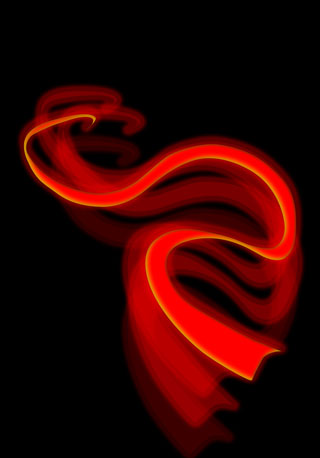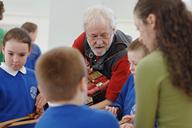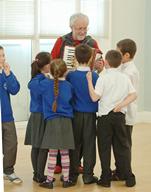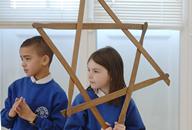transition|
English long sword dance
Joy
and Eric Foxley
 The
English long sword dance is a hilt-and-point sword dance recorded mainly in
Yorkshire. It has some similarities to the rapper sword dance of Northumbria,
but the character is fundamentally different as it uses rigid metal or wooden
swords, rather than the flexible spring steel rappers used by its northern
relation.
The
English long sword dance is a hilt-and-point sword dance recorded mainly in
Yorkshire. It has some similarities to the rapper sword dance of Northumbria,
but the character is fundamentally different as it uses rigid metal or wooden
swords, rather than the flexible spring steel rappers used by its northern
relation.
 Although
long sword dances are found scattered all over Yorkshire, there are particular
concentrations of dances in East Cleveland, the northern part of the North
York Moors and around Sheffield.
Although
long sword dances are found scattered all over Yorkshire, there are particular
concentrations of dances in East Cleveland, the northern part of the North
York Moors and around Sheffield.
 Long sword
dances vary in the way they are performed, with some being slow and militaristic,
such as the Grenoside dance, while others are performed with pace and speed,
like the Handsworth dance from near Sheffield. Others have different features
including variations of numbers of dancers and distinctive movements. Most
traditions use six dancers, but the Flamborough team uses eight. Rapper sword
teams have 5 dancers.
Long sword
dances vary in the way they are performed, with some being slow and militaristic,
such as the Grenoside dance, while others are performed with pace and speed,
like the Handsworth dance from near Sheffield. Others have different features
including variations of numbers of dancers and distinctive movements. Most
traditions use six dancers, but the Flamborough team uses eight. Rapper sword
teams have 5 dancers.
 Unlike
many traditional dances in England, which are mainly performed by revival
teams, Long Sword dances are often still performed by their own village teams,
such as Grenoside Sword Dancers, the Goathland Plough Stots and Flamborough
Sword Dancers. These teams generally maintain the traditions of their dances,
such as traditional performances on Boxing Day or Plough Monday.
Unlike
many traditional dances in England, which are mainly performed by revival
teams, Long Sword dances are often still performed by their own village teams,
such as Grenoside Sword Dancers, the Goathland Plough Stots and Flamborough
Sword Dancers. These teams generally maintain the traditions of their dances,
such as traditional performances on Boxing Day or Plough Monday.
The term “hilt-and-point” means that the dancers
are linked together by the swords, one dancer holding the hilt of the
sword and their neighbour holding the point. [They are not real swords!
The points are not sharp!] An integral moment of every dance is when
the swords are interlinked in a “lock” (as in the pictures)
which can be held aloft by the team leader.
For teaching of long and rapper sword dancing contact Joy
& Eric Foxley, who can also help with morris and clog dancing,
playing for folk dancing, and folk singing.
Based on
information from Wikipedia, the free encyclopaedia.






